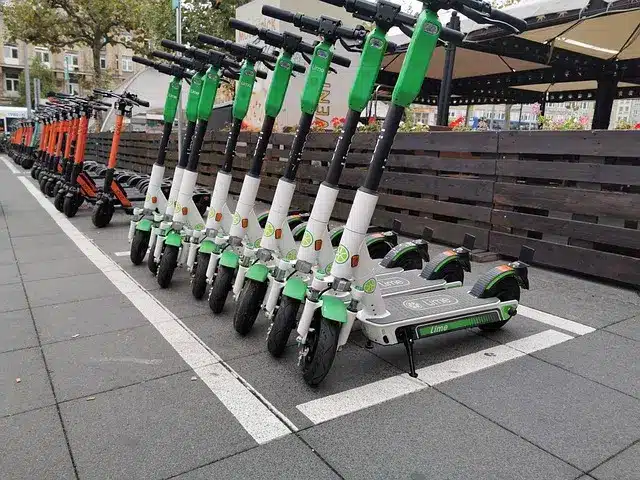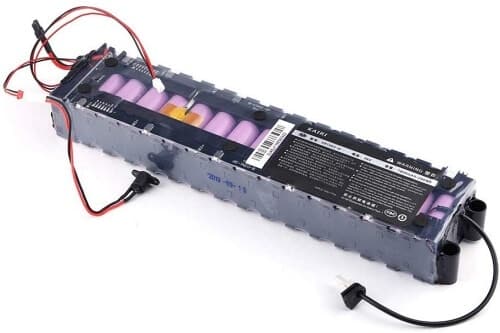Electric Scooter Batteries Overheating

Prime riding season is upon us. Spring and summer are on the way, and there’s no better time to get outside on an electric scooter than in the warmer months.
But news of electric scooters overheating has been a concern lately, something that can happen even in mid-winter due to manufacturer’s defects or serious maintenance and storage problems.
Why do electric scooters overheat? Below we’ll look at a few of the reasons and what you can do to stop this from happening well before it results in a fire or explosion.
Should You Be Worried?

News of electric scooter and bike fires can be alarming, but the incidents themselves are rare and mostly tend to happen under specific circumstances.
Most battery fires occur in warehouses that store dozens, even hundreds of rental scooters, or apartments and restaurants where many electric bikes are left charging together, sometimes overnight or with the wrong chargers or batteries.
Rising worries about two-wheeled electric vehicle fires correlate with a huge global increase in the adoption of electric scooters and bicycles around the world. Not all of these new products have dependable quality control systems, and many of them are charged and stored in very unsafe ways.
Yet on the whole, the Lithium-ion batteries used to power electric scooters have shown themselves to be safe and reliable under normal storage and operating conditions.
It is important to remember that e scooter overheating incidents are typically rare and can be prevented through proactive measures.
By investing in a high-quality electric scooter, being mindful of environmental factors, and regularly maintaining your scooter, you can safely and confidently enjoy riding your electric scooter without worrying about overheating.
The Battery and Electrical System
Electric Scooter Batteries

Lithium ion batteries use an electrochemical process to move ions and electrons between a positive and negative cathode when charging and discharging (riding). Scooter batteries use several battery cells wired together in a battery pack.
The charging/discharging cycle of an electric scooter battery does generate heat, but when the charging process works properly, the battery maintains a safe temperature by dissipating excess heat externally.
Thermal Runaway
When heat builds up inside the battery too quickly to be dissipated, it creates a condition known as thermal runaway, the primary cause of fires and explosions.
Thermal runaway can be prevented by following all of the manufacturer’s guidelines on proper battery charging practices and by following the suggestions in this article.
BMS and Controller
An overheating battery can be caused by a short circuit or an electrical failure in the scooter’s system itself. This can happen, for example, if a component called the battery management system (BMS) fails to shut down charging if the battery temperature is critically hot.
Most electric scooters, however, will regulate the battery’s charging cycle carefully to keep it from overcharging/overheating. Only those with cheap components tend to overheat due to overcharging
A faulty speed controller can also cause overheating when the scooter is in motion by failing to regulate the amount of power the motor pulls from the battery and therefore causing the motor to overheat.
An overheating electric scooter can also be caused be an overheated motor housing that transmits heat to other parts of the scooter, especially the battery pack.
Be Proactive: Look for Visible Issues and Ride Safely
If you experience any issues with your electric scooter, it is important to address them immediately to prevent further damage.
Signs of overheating can include the smell of burnt plastic, smoke, or visible damage to the battery or electrical system.
If you notice any of these signs, stop using your scooter and contact the manufacturer or a certified repair technician for assistance.
Do not ride an electric scooter that exhibits any signs of overheating.
Other electrical system failures that can cause overheating include loose wires or an electric scooter battery that has been punctured, ruptured, or otherwise damaged in some way.
Look out for any loose connections or frayed wires on your scooter and examine the battery for distended areas on the battery pack or leakage from the battery itself.
If you notice any of these signs, do not ride or charge the electric scooter! Instead, schedule your electric scooter for service or repair with a qualified technician.
If a battery pack is physically damaged, you will mostly likely need to replace it with a new battery.
Proper Storage
Finally, it’s important to store your electric scooter properly to prevent overheating. When not in use, avoid leaving it in direct sunlight or in a hot car. Store it in a cool, dry place where the battery and electrical system can properly dissipate any built-up heat.
By being proactive and taking steps to prevent overheating, you can safely and confidently enjoy riding your electric scooter without worrying about the risk of fires or explosions.
Environmental Factors and Riding Habits

Internal electrical issues and poor charging practices are two causes of overheating that can happen year round and around the world. Some other causes are environmental and are more likely to be an issue in hot climates or summer weather.
Just like people, electric scooter batteries can struggle to cool down in high heat. For this reason, you should never leave an electric scooter outside in the sun for an extended period of time.
While electric scooters are designed to dissipate heat buildup, that can become difficult when there are high temperatures outside the scooter’s battery and electrical system that keep the heat trapped inside.
Because of the dangers of heat buildup, you should always bring an electric scooter inside with you or park it in the shade after riding so it has ample opportunity to cool down, and always store your scooter in a cool, dry place.
Cool Runnings
To prevent overheating, it’s also important to avoid riding an electric scooter up steep inclines for extended periods of time, especially if the scooters motor isn’t rated for steep climbs.
Overworking an e scooter puts a significant strain on the battery and electrical components, causing them to generate more heat than they can safely release.
If the scooter is pushed too hard at high speeds for long periods of time, the electric motor can build up an immense amount of heat that cannot be safely discharged in time.
It’s also important to avoid riding an electric scooter in temperatures that are too high. As the temperature rises, the battery and electrical components of the scooter can become overwhelmed and start to overheat.
To prevent overheating while riding, try to ride in cooler temperatures or during cooler times of the day during the summer. If you must ride in hot weather, take breaks to allow the scooter to cool down in the shade.
Remember to ALWAYS let your scooter battery cool down before plugging it in to charge after a ride.

Finally, while sleek, black electric scooters are really cool, we have to say (seriously, no pun intended), they’re also totally impractical in consistently hot weather.
If you live in a warm climate, it’s best to purchase a light-colored or white electric scooter. Not only will its metal parts stay cooler to the touch in the sun, but they will dissipate, rather than trap, the heat of its electrical components much faster.
A white Unagi Model One or Anyhill UM-2 might be just the thing for the sun-soaked summer days coming up.
Summary
While electric scooter overheating incidents can be alarming, they are typically rare and can be prevented through proactive measures.
By investing in a high-quality electric scooter, being mindful of environmental factors and your riding habits, and regularly maintaining your scooter, you can safely and confidently enjoy riding your electric scooter without the risk of it overheating.







